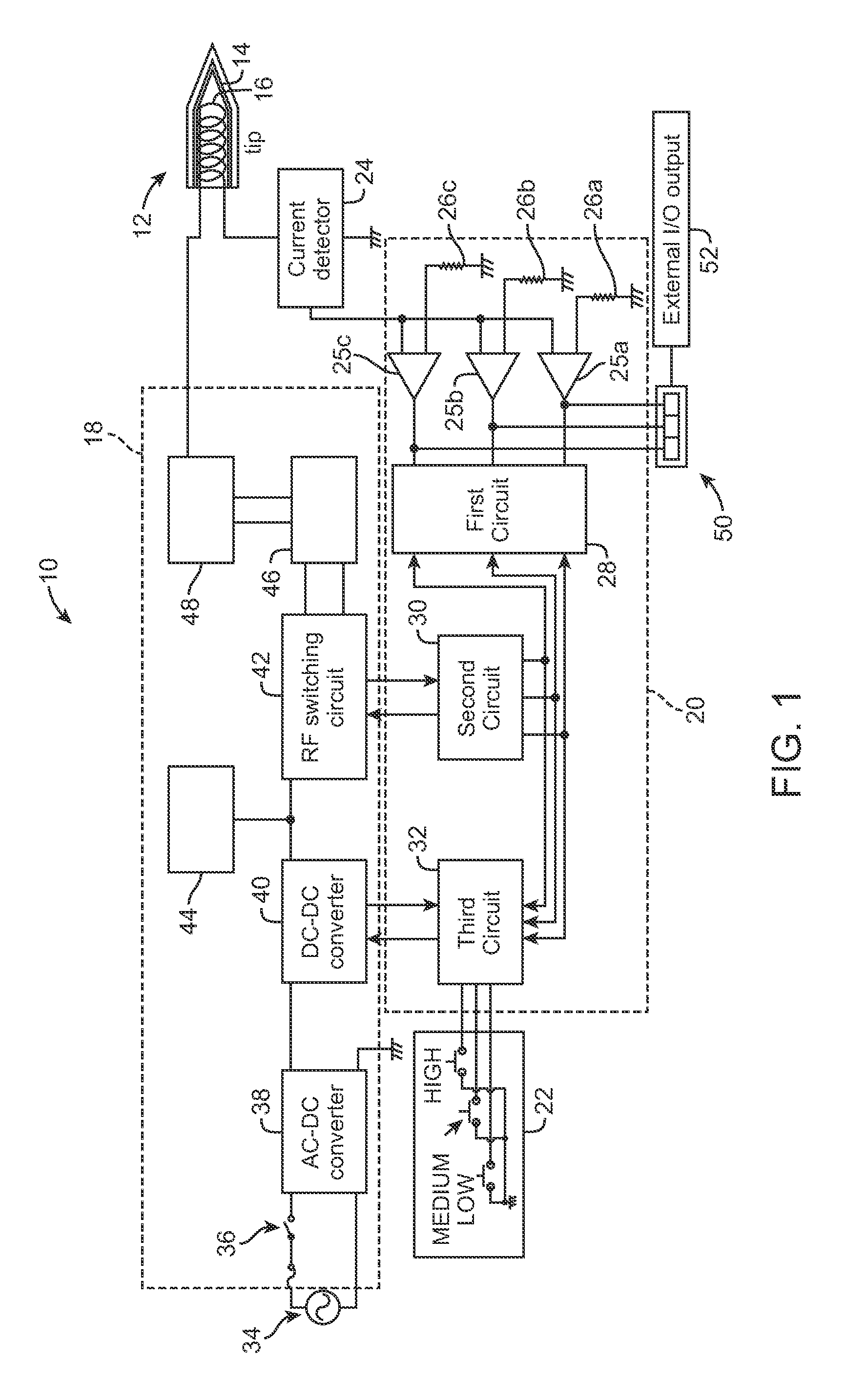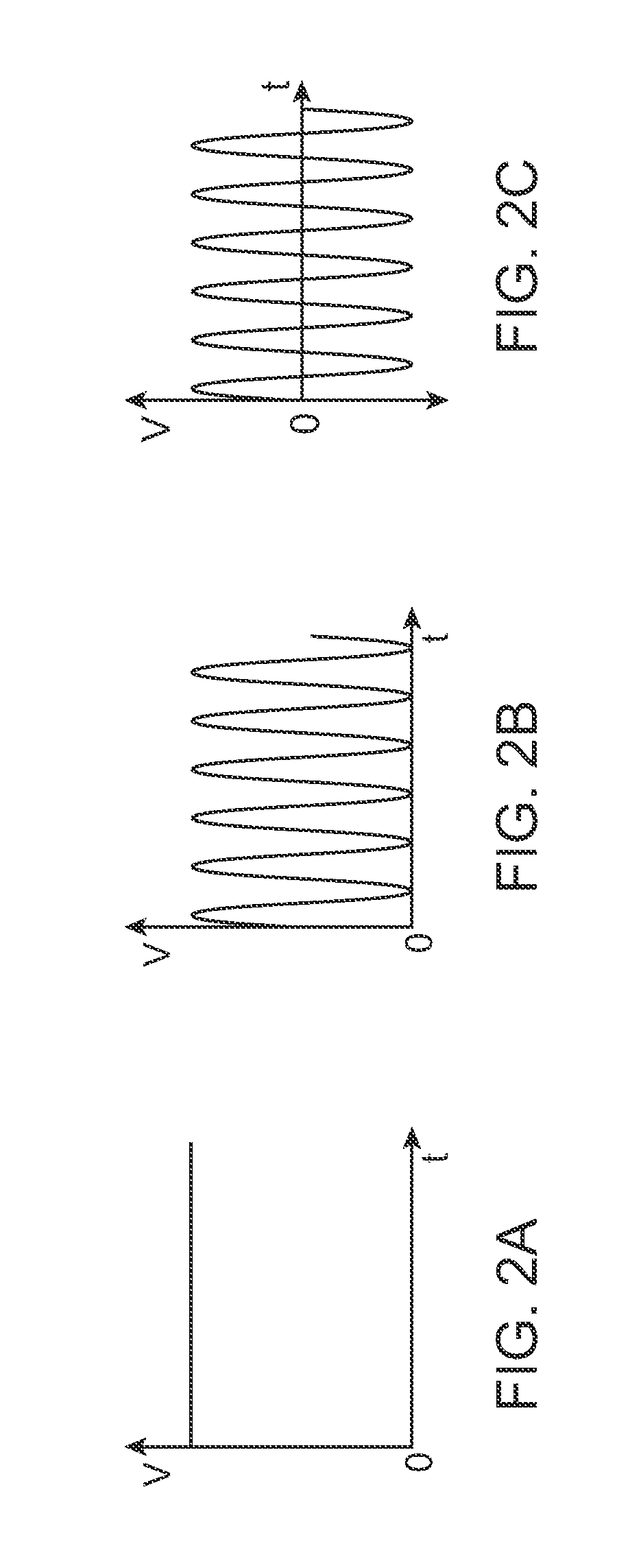System and Method for Induction Heating of a Soldering Iron
a soldering iron and induction heating technology, applied in the field of soldering irons, can solve the problems of increased heating of the working tip through magnetic loss or hysteresis, and decreased or cessation of joule heating
- Summary
- Abstract
- Description
- Claims
- Application Information
AI Technical Summary
Benefits of technology
Problems solved by technology
Method used
Image
Examples
Embodiment Construction
[0014]Referring now in more detail to the exemplary drawings for purposes of illustrating embodiments of the invention, wherein like reference numerals designate corresponding or like elements among the several views, there is shown in FIG. 1 a soldering iron system 10 that utilizes induction heating of a soldering iron tip 12. As will be apparent from the description below, the temperature of the tip can be precisely adapted for various soldering tasks in a convenient and cost-effective manner.
[0015]The tip includes an induction heating portion 14, which may be made of a magnetic alloy, and a coil 16 that produces magnetic flux that induces current in the heating portion 14 when electrical power is delivered to the coil 16. The heating portion 14 may be in the form of a thin layer of ferromagnetic material surrounding the coil 16. It will be appreciated that any tip configuration suitable for induction heating may be used with the present invention. For example, the tip configurati...
PUM
| Property | Measurement | Unit |
|---|---|---|
| frequency | aaaaa | aaaaa |
| Tc | aaaaa | aaaaa |
| output frequency | aaaaa | aaaaa |
Abstract
Description
Claims
Application Information
 Login to View More
Login to View More - R&D
- Intellectual Property
- Life Sciences
- Materials
- Tech Scout
- Unparalleled Data Quality
- Higher Quality Content
- 60% Fewer Hallucinations
Browse by: Latest US Patents, China's latest patents, Technical Efficacy Thesaurus, Application Domain, Technology Topic, Popular Technical Reports.
© 2025 PatSnap. All rights reserved.Legal|Privacy policy|Modern Slavery Act Transparency Statement|Sitemap|About US| Contact US: help@patsnap.com



